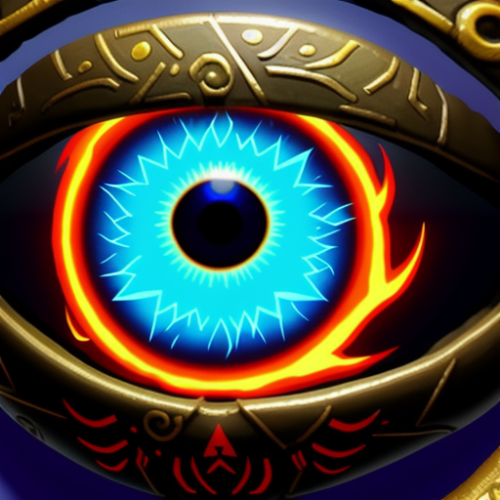-
Posts
1673 -
Joined
-
Last visited
-
Days Won
2
About LucShep
- Currently Viewing Topic: Flat screen QHD vs UHD
- Birthday 06/17/1975
Personal Information
-
Flight Simulators
- DCS World
- Falcon BMS
- IL-2 Great Battles
- Wings Over The Reich
- Strike Fighters 2
(with mods)
- IL-2 1946
(VP Modpack & JetWars) -
Location
LX - PT
-
Interests
Gaming/simming and modding, PC hardware, motorcycles
-
Website
https://www.digitalcombatsimulator.com/en/files/filter/user-is-Luke%20Marqs/apply/
Recent Profile Visitors
10057 profile views
-

DCS hangs on launch when using a resolution lower than native
LucShep replied to icedstar's topic in General Bugs
What I find interesting is, why would you force a lower resolution, when you are able to use DLSS upscaling in the DCS game options and your GPU supports it? In DCS options, first set it at the native 3840x2160 (i.e, 4K) resolution, and then use DLSS at a desired setting (the "Upscaling" seting). - If set at "Quality" setting (=66% upscaling), you're basically running the game at 2560x1440 (i.e, 1440P) resolution, but upscaled through AI algorithm. - If set at "Balanced" setting (=50% upscaling), you're basically running the game at 1920x1080 (i.e, 1080P) resolution, but upscaled through AI algorithm. You'll then find that adjusting the setting "Sharpening" (right below it) will be required, as the image may look a bit too soft (personal taste, from 0.3 upto 0.7 should be good). It will look incomparably better than manually forcing a lower resolution, while keeping the native resolution and all the big performance benefits. - - - On a different aspect, about the Nvidia driver selection - you do whatever suits you (it's your PC) but from personal experience with plenty different troubled systems, I'd strongly advise against using latest drivers (any that are post 566.36) on any RTX 30 series GPU (like yours), though there'll be plenty "rubish, it's perfectly fine, ignore that" comments. I'd actually urge you to install Nvidia 537.58 WHQL drivers, and even better if it's a bloatware cleaned driver version. These are considered the best drivers for RTX 30 (and older) series, because of stability, latency and frame pacing benefits that none later version was ever able to match (though driver 566.03 is not too bad). If interested, you can get a 537.58 WHQL "clean version" from here: https://mega.nz/folder/dQRX3AQI#9RmtXT0cTw45RsWxTQgYiw/file/JJ5kQAAC Uncompress (unzip) the package, then go to the folder with the extracted files, and run setup.exe to start the drivers installation. And, while optional, to first uninstal current drivers with DDU (https://www.tomshardware.com/how-to/uninstall-nvidia-amd-intel-gpu-drivers) is a good idea. This will ensure that your system is clean of any display driver left overs (which can cause issues and conflicts) before (re)installing any Nvidia drivers. -
Okay. You do you.
-
Heh... on an RTX 30 series GPU? Sure thing. Enjoy your "placebo fix" with a pinch of performance loss and instability....
-

can not reproduce Blackouts have returned.
LucShep replied to DmitriKozlowsky's topic in 2D Video Bugs
Using the correct Nvidia driver version for the respective GPU series model (and after uninstalling Nvidia drivers with DDU) often solves all problems. I've lost count of silly bonker issues I was asked to help with in these last months, caused by the common lure of "installing latest drivers surely will make my game run better?!". People need to stop thinking about "latest is greatest" and realize that can be a really terrible idea, and the root of hair pulling problems encountered with games. None Nvidia driver is perfect, they are always in constant corrections, with new bugs appearing at times, when previously those weren't present (case in point lately). Latest GPU hardware and newest game titles are, and have always been, the priority for improvements, while previous GPU models and games are considered secondary and can become worse in the process (and eventually they do, again case in point lately). Graphics drivers are historically prone to errors when a new architecture is launched - as has been the case the last few months - sometimes indefinitely for the previous series models, and this is why you should really stick with certain driver versions for certain series models: You should only use latest Nvidia drivers (572.16 or newer) if you have an RTX 50 series GPU, and only then. If you have an RTX 40 series GPU, stick with driver 566.36 (link here) because that was the last "trouble free" driver for those models. There's a better performance alternative in driver 566.03 (here) but it's not as refined bugs-fix wise. If you have an RTX 30 series GPU (or older), stick with 537.58 (link here) because this is still the very best driver (and best overall frame pacing) for those models. Before installing any Nvidia drivers, it is recommended to uninstall your current Nvidia drivers with DDU: https://www.wagnardsoft.com/forums/viewtopic.php?t=5324 This will ensure that your system is clean of any display driver left overs (which can cause issues) before (re)installing any Nvidia drivers. (SIDE NOTE: I prefer to use the portable version of DDU, it'll extract files to a directory of your choice - where you then go to run DDU, by 2x clicking in the executable) If you're not accustomated to this procedure with DDU, then you have a tutorial here: https://www.tomshardware.com/how-to/uninstall-nvidia-amd-intel-gpu-drivers I'd also strongly suggest to debloat the Nvidia drivers before installing them - there's always a heap of nefarious bloatware in them which affects performance. You can do this by using NVCleanstall (link here). If you never done this, there's a video tutorial here (there may be others around) to see how it's done. Lastly, and as side note, never ever upgrade Nvidia drivers if the reason is to get newest DLSS version, because you can download/install whatever DLSS version regardless of Nvidia driver version in use (drop the desired DLLs in same folder location where the game executable is): NVIDIA DLSS DLL --------------------------- https://www.techpowerup.com/download/nvidia-dlss-dll/ NVIDIA DLSS Frame Generation DLL -------- https://www.techpowerup.com/download/nvidia-dlss-3-frame-generation-dll/ NVIDIA DLSS Ray Reconstruction DLL ------ https://www.techpowerup.com/download/nvidia-dlss-3-ray-reconstruction-dll/ -
All Z490 motherboards support Resizable Bar since early 2021, but will require a BIOS update (I'd always suggest most recent version available for the specific motherboard). Your MSI Z490 Plus have had it since BIOS version 7C98v15 (and there have been other BIOS updates since then): https://www.msi.com/Motherboard/Z490-PLUS/support Not sure you're comfortable with a BIOS update procedure but, well, the option is there and having the RBAR feature is worth it (IMO).
-
Instead, what you should be looking for is "Necksafer". There are two versions of Necksafer, VRNecksafer and XRNecksafer. DCS now defaults to OpenXR, so you'll want the latter one: https://gitlab.com/NobiWan/xrnecksafer Here's a video explaining what this program does:
-
Source: https://videocardz.com/newz/nvidia-geforce-rtx-5080-super-spec-leak-24gb-32gbps-g7-memory-and-same-core-count-as-rtx-5080 https://videocardz.com/newz/nvidia-also-planning-geforce-rtx-5070-ti-super-with-24gb-gddr7-memory https://videocardz.com/newz/nvidia-geforce-rtx-5070-super-reportedly-features-6400-cuda-cores-and-18gb-memory Nvidia RTX 50 SUPER series were already expected, though leaks and rumours are popping sooner than most presumed (six months only since RTX 50 series launched). Usually, when Kopite7kimi shares updates on the GeForce series, it means NVIDIA has provided specs to board partners. This doesn’t always mean the specs are final, and we’ve seen them change many times before. Benchlife previously mentioned that, unless something changes, the RTX 50 SUPER refresh isn’t expected until CES 2026 (January 6th to 9th, 2026). So, we could be looking at GPUs that are still months away, not weeks. Anyway, these are the preliminary rumours / leaks: The increase in VRAM, although very welcome, is expected to further increase acquisition costs for the consumer (higher prices, of course) even more. Also, knowing Nvidia, from past adventures with "SUPER" refresh versions (RTX20 and RTX40 series), they'll probably announce and launch the new refresh series cards as abruptly and with as few antecipation as possible, so that people keep buying the "non Super" models for the longest before those are left forgotten on the shelves.... EDIT: youtuber JayzTwoCents already jumped on these rumours too:
-
- 2
-

-

-

CGTC - textures overhaul mod for the Caucasus map
LucShep replied to LucShep's topic in Texture/Map Mods for DCS World
@PeeJott17 and @Stratos doesn't seem related to CGTC. If the subject is Marianas modding, then perhaps better open a separate thread for it? -

Hows this monitor for 4k on my 7800XT?
LucShep replied to Steel Jaw's topic in PC Hardware and Related Software
Oh sorry, didn't notice you already have a 32'' 1440P gaming monitor. Disregard my previous suggestions then. Personally, I don't think the MSI MAG 321CUP is worth the expense as an upgrade from yours (also for reasons previously stated), but you might find that different... Honestly, I'd only upgrade what you already have to a bigger monitor. Which then, yes, would have to be 4K. The problem there is budget..... the bigger good stuff is also much more expensive. If it's for desk use, one that imediately pops in my mind is the 38'' ASUS ROG Swift PG38UQ (38'' 4K 144Hz IPS): https://rog.asus.com/monitors/above-34-inches/rog-swift-pg38uq/ This is a different and interesting option that ASUS puts out, because it's a nice big monitor but not "too big" for desktop use, if that's the main use intention. And then there are the various 42'' OLED monitors in the market, including LG OLED TVs (also work great as monitors). Probably will feel a bit too big on a desk (if coming from smaller monitors) but are perfectly suitable for that role. ASUS PG42UQ - review: https://www.rtings.com/monitor/reviews/asus/rog-swift-oled-pg42uq Philips 42M2N8900 - review: https://www.tomshardware.com/reviews/philips-evnia-42m2n89-review KTC G42P5 - review: https://www.guru3d.com/review/ktc-g42p5-oled-monitor-review/ LG OLED Flex LX3 (TV, HDMI 2.1 only, no DisplayPort; screen is bendable - flat to 900R curve) - review: https://www.rtings.com/tv/reviews/lg/oled-flex LG OLED42C3 (TV, HDMI 2.1 only, no DisplayPort) - review: https://www.rtings.com/tv/reviews/lg/c3-oled LG OLED42C4 (TV, HDMI 2.1 only, no DisplayPort) - review: https://www.rtings.com/monitor/reviews/lg/42-c4-oled LG OLED42C5 (TV, HDMI 2.1 only, no DisplayPort) - review: https://www.rtings.com/tv/reviews/lg/c5-oled -

Hows this monitor for 4k on my 7800XT?
LucShep replied to Steel Jaw's topic in PC Hardware and Related Software
What monitor are you currently using? (size, resolution and refresh, panel type?) The 7800XT is certainly 4K gaming capable, but not really meant for it. While DCS at 4K on a 7800XT is doable, you'll be forced to cut down some settings. I'd also suspect that, for the heavier maps, to use FSR may become necessary in 4K resolution - and here is where things get less positive... The 7800XT uses FSR3 and, as you may know, the image is nowhere as good as Nvidia's equivalent DLSS (it gets a bit blurry and grainy, comparatively). I honestly think 4K makes more sense (to me anyway) in bigger panels, from 38'' and upwards in size, and where this sort of "sacrifice/compromise" would make more sense. Matter of personal opinion but, to me, I think you'd be better served with a good monitor that is 32'' 1440P VRR 144Hz+ with IPS panel. And there are some very good examples out there very reasonably priced now (I'll leave this for last). Reasons for me in this case are: The 1440P resolution still provides very good image at a 32 inches screen size, and will be much better handled there. This way, you could maintain the native resolution (2560x1440) with no upscaling, using TAA (maybe with some sharpening added) as the anti-aliasing method in the game options. Which results in both good image quality and performance, with your 7800XT. Regarding screen high refresh-rate, you'll notice 144Hz, 165Hz, 180Hz and 240Hz will be the most common these days for gaming monitors. Regardless, noone sees the benefits of maxxing such high refresh-rates with flight sims, as it's unnecessary for the genre of game and becomes increasingly harder to run. The point here -and in DCS for this matter- is that, if it's a high-refresh gaming monitor, it means it'll handle motion (i.e, movement) a lot better, regardless of frame-rate (so long as it's above 60FPS, that is), then resulting in a more "natural picture" when things are moving, with far less blur and ghosting, which is very appreciated. And here, and with any gaming monitor these days, what you should do is enable VRR (FreeSync in your case, with the 7800XT) and lock the max framerate in game to something like 120FPS (or 100FPS, or 90FPS, or 80FPS, etc, whatever your prefer), then let the monitor panel do the rest. The last thing is the panel type on a monitor. The different types are TN, VA, IPS and OLED (also subdivided into WOLED and QDOLED). TN is more focused on fast image on very high refresh panels, fast response times and motion handling, not so much image quality, so it's not a good choice for flight-sims. (not recommended) VA is more focused on high contrast and vibrant colors, but at cost of motion handling (blur, ghosting) and poor view angles, which you may notice and dislike with flight-sims. (not recommended) IPS is more focused on color accuracy, motion handling, response times and better view angles, at a cost of lower contrast, but generally a great choice for flight-sims. (recommended) OLED are the best for image quality (true blacks, no backlight bleeding, no glowing or blooming) and instantaneous response times, but very expensive and risk of burn-in. (recommended, with that caveat) You mention budget is a concern. There are plenty 32'' 1440P IPS gaming monitors that are very good and not too expensive (from $200 to $400 USD). There are so many monitors always coming out, at any time, that it's hard to trace what is best or not but, having tried these myself, I'd definitely recommend them: Asus TUF Gaming VG32AQL1A --- 32'' 1440P (2560x1440) 165Hz / OC 170Hz - IPS https://www.asus.com/displays-desktops/monitors/tuf-gaming/tuf-gaming-vg32aql1a/ Asus ROG Swift PG329Q --- 32'' 1440P (2560x1440) 165Hz / OC 175Hz - IPS https://rog.asus.com/monitors/32-to-34-inches/rog-swift-pg329q-model/ LG 32GS75Q-B --- 32'' 1440P (2560x1440) 180Hz - IPS https://www.lg.com/us/monitors/lg-32gs75q-b-gaming-monitor LG 32GP850-B --- 32'' 1440P (2560x1440) 165Hz / OC 180Hz - IPS https://www.lg.com/us/monitors/lg-32gp850-b-gaming-monitor LG 32GP750-B --- 32'' 1440P (2560x1440) 165Hz - IPS https://www.lg.com/us/monitors/lg-32gp750-b-gaming-monitor Gigabyte GS32Q --- 32'' 1440P (2560x1440) 165Hz / OC 170Hz - IPS https://www.gigabyte.com/Monitor/GS32Q#kf Gigabyte M32Q --- 32'' 1440P (2560x1440) 165Hz / OC 170Hz - IPS https://www.gigabyte.com/Monitor/M32Q#kf I'd say you can't really go wrong with any of these (all are good) and they're not too expensive. -

CGTC - textures overhaul mod for the Caucasus map
LucShep replied to LucShep's topic in Texture/Map Mods for DCS World
Hi there. I don't run the Marianas map (pretty bad performance and of very little interest to me, ended up deleting it), so unfortunately I can't help you there. But my guess is that anyone with basic modding and 2D texturing skills will be able to easily do it. It's a matter of finding the respective textures inside the texture packages, then adapt and repackage the new ones. -
Agreed, 96GB seems like the sweet spot for RAM capacity now, for those building a new system for DCS.
-
Well, regardless, that's good news. If you cleaned the previous Nvidia drivers with DDU and installed the Nvidia 537.58 drivers, it could be that. That could be enough to make things imediately improved. However, undervolting is a very strong recommendation on any RTX 3090 (otherwise it's always a struggling furnace, and wattage guzzler!). So, make sure MSI Afterburner is always working (i.e, starting with Windows) with the undervolting settings applied, and that GPU of yours will last a long, long time trouble free. I just noticed a prior post of yours here, asking about a possible swap to the AMD RX 9070 XT. As good as that is, I don't think it's that much of an improvement over the RTX 3090, especially considering the current prices. Keep yours, as it's still a really good GPU in 2025 (plus, it's an EVGA FTW - among the very best ones). Personally, I would only upgrade an RTX 3090 for an RTX 5080 or RTX 4090.








